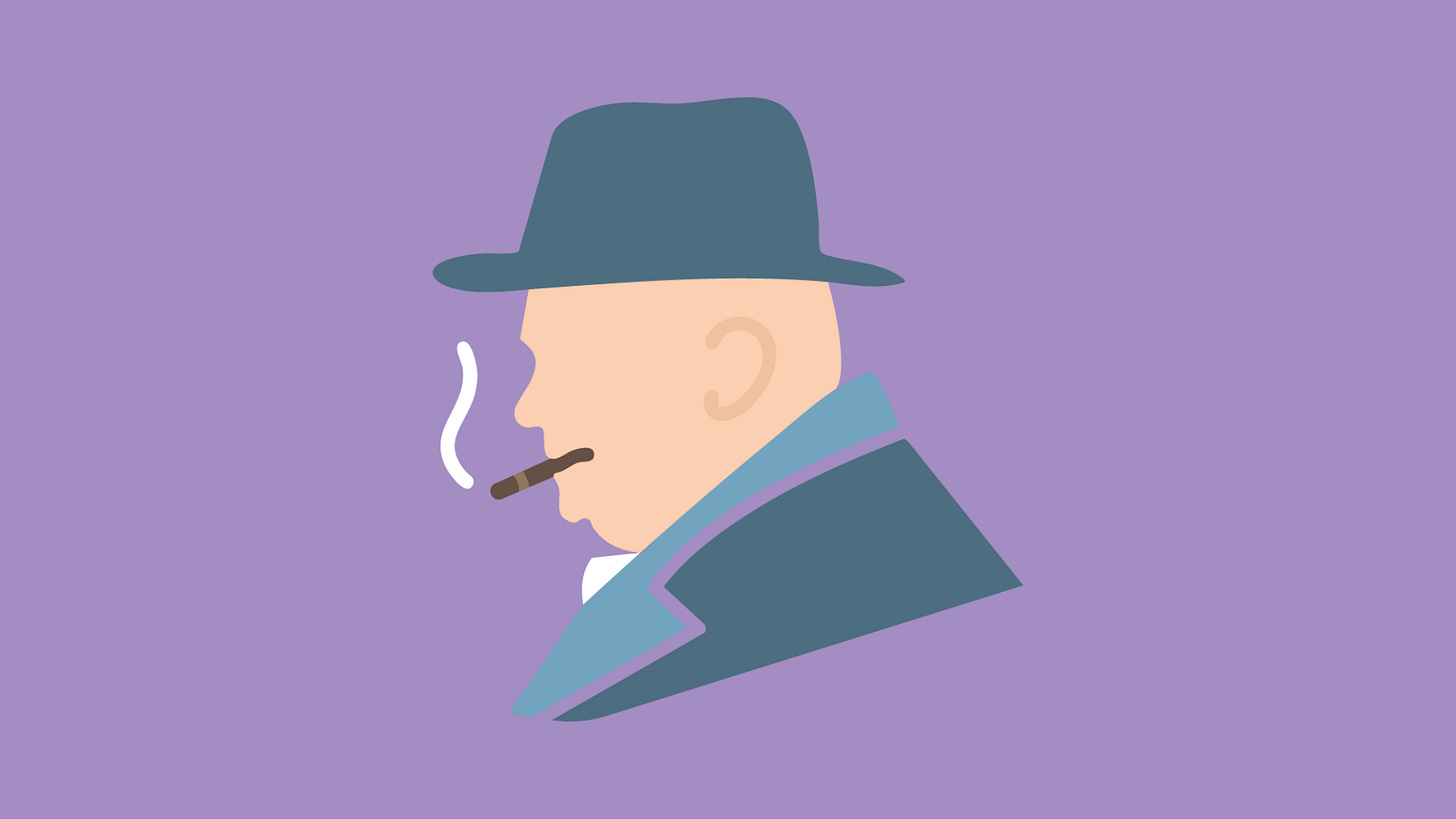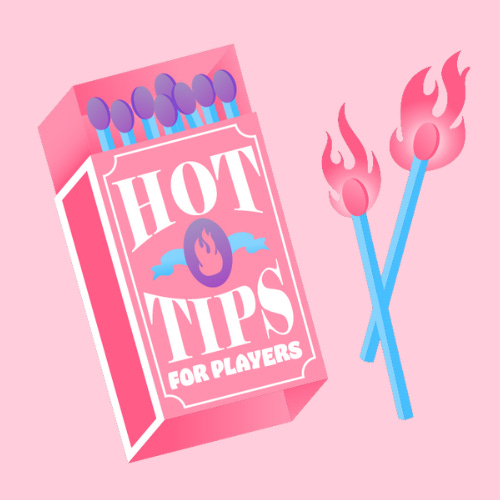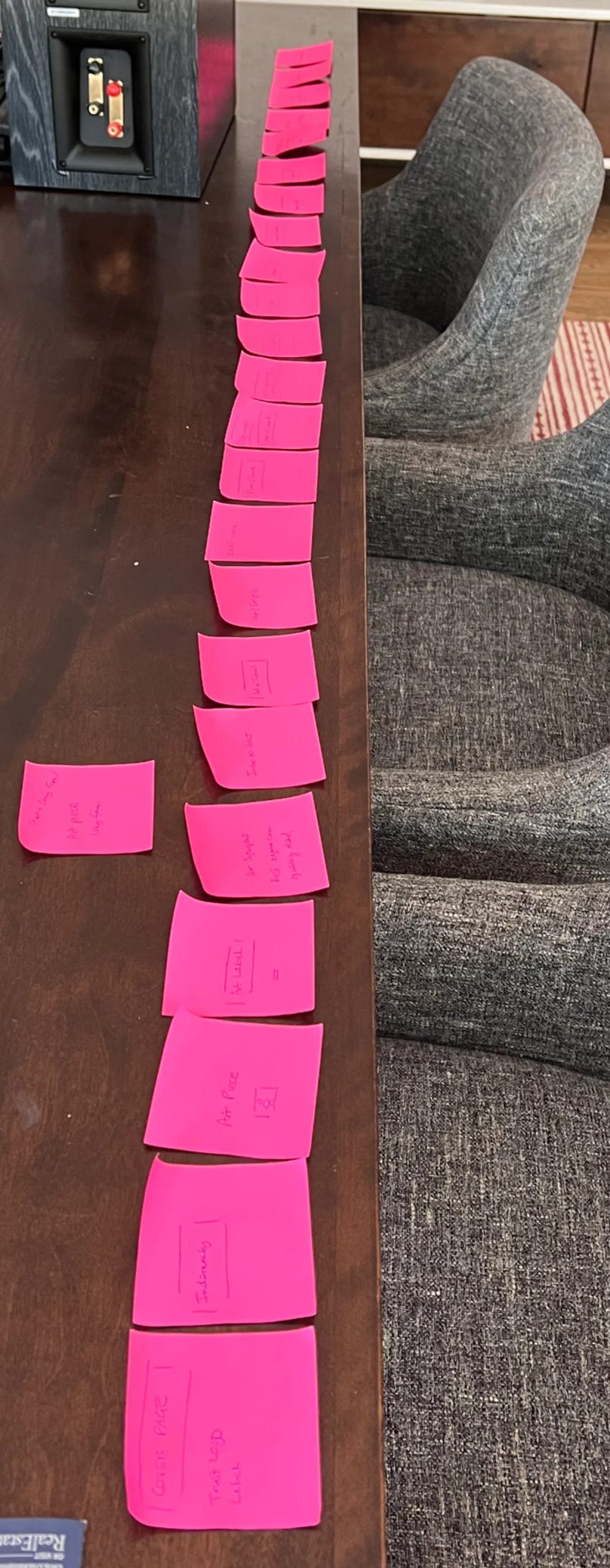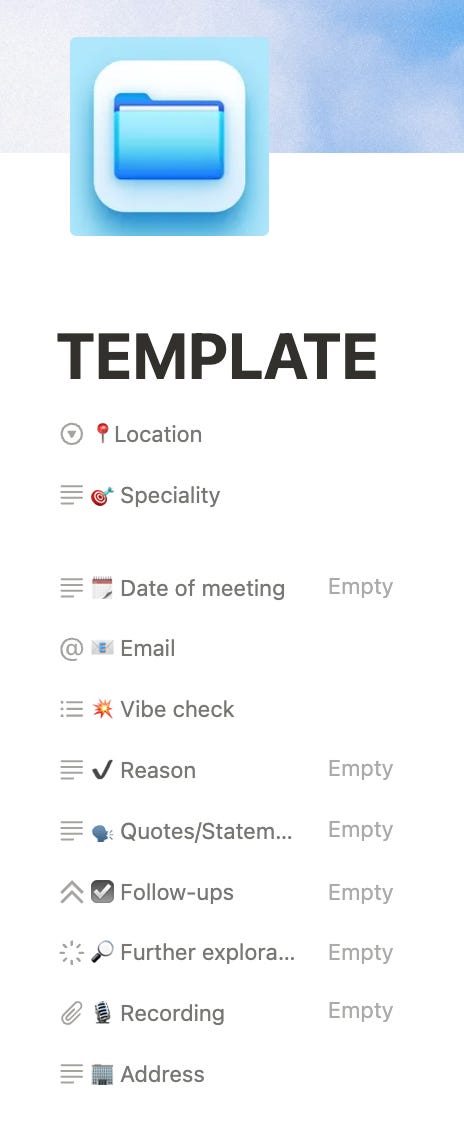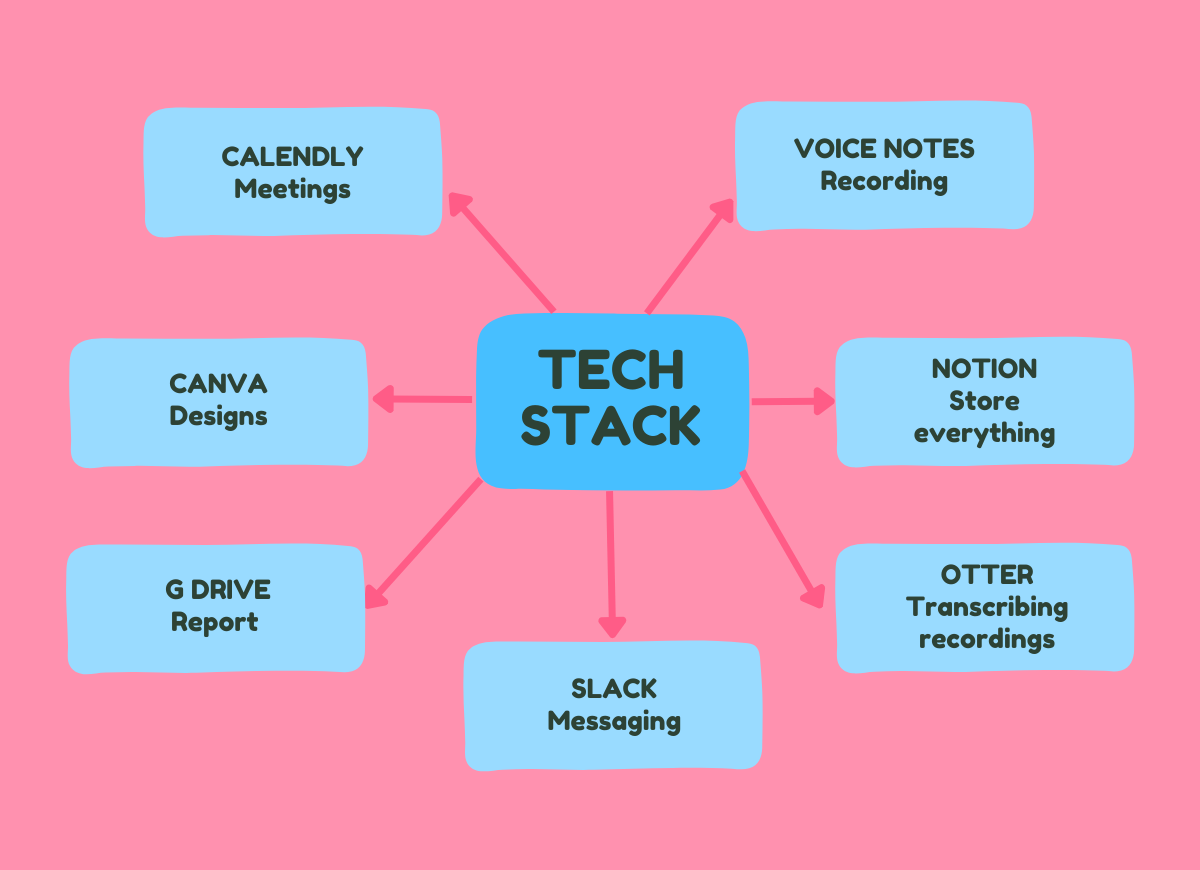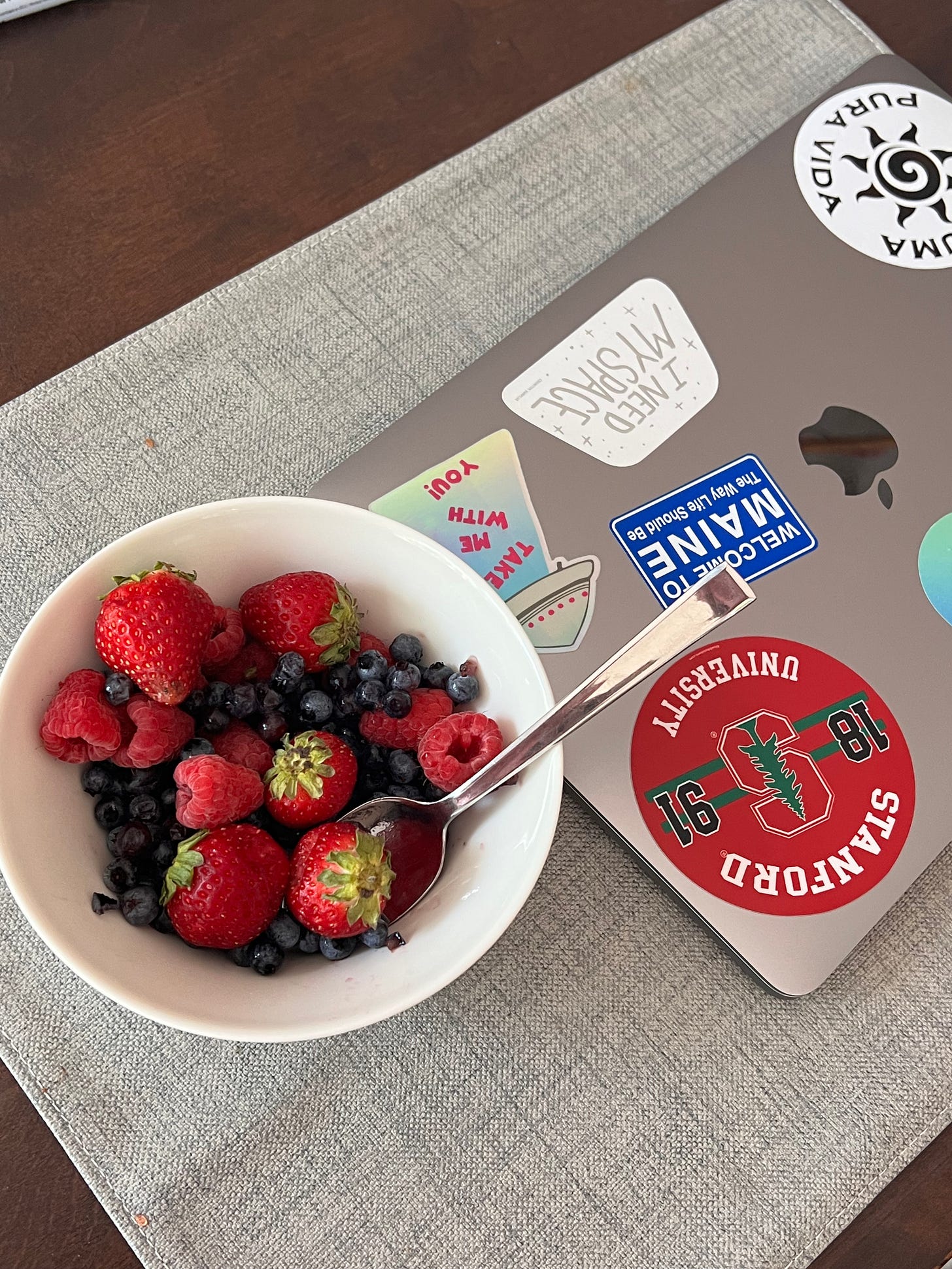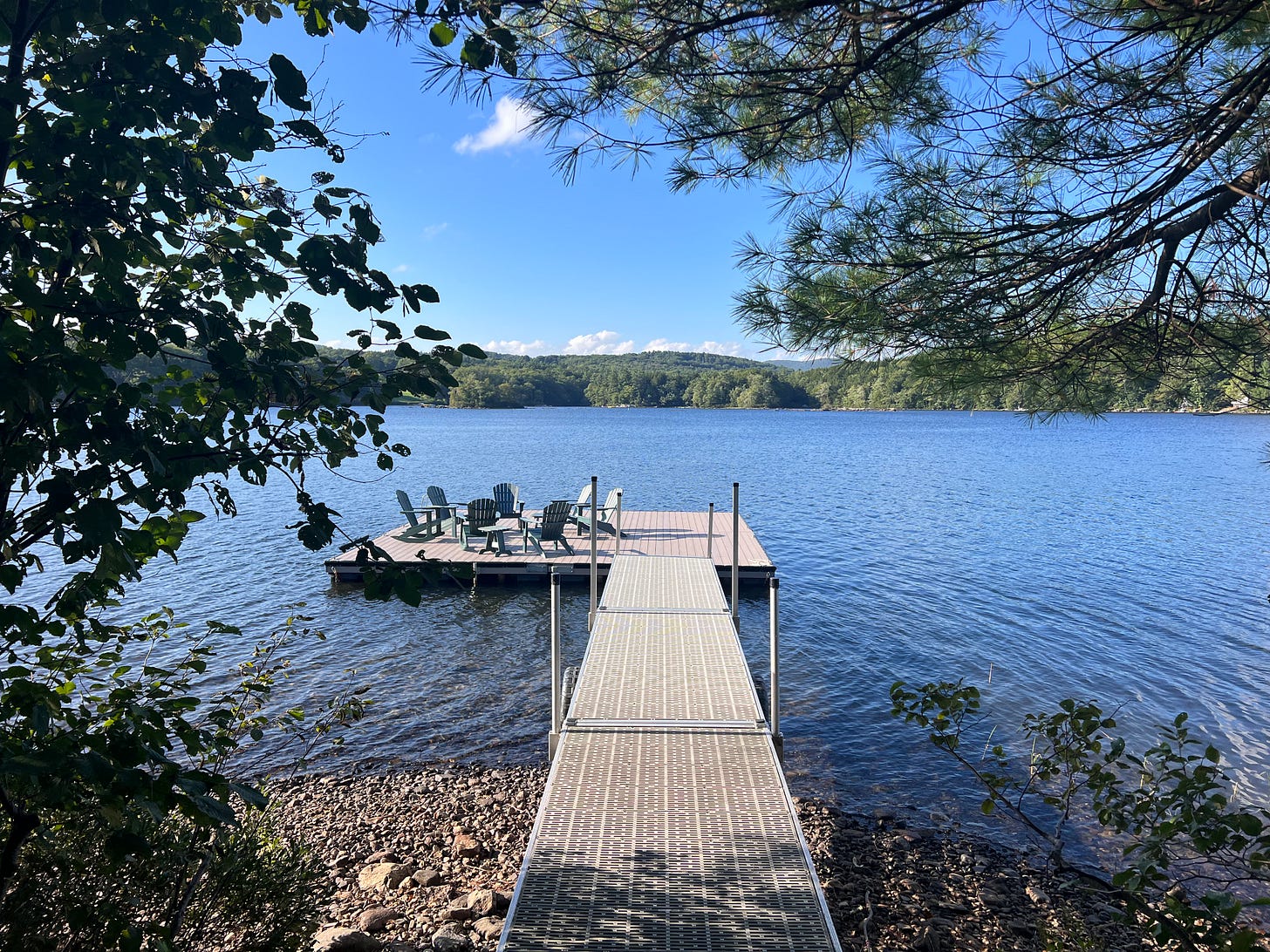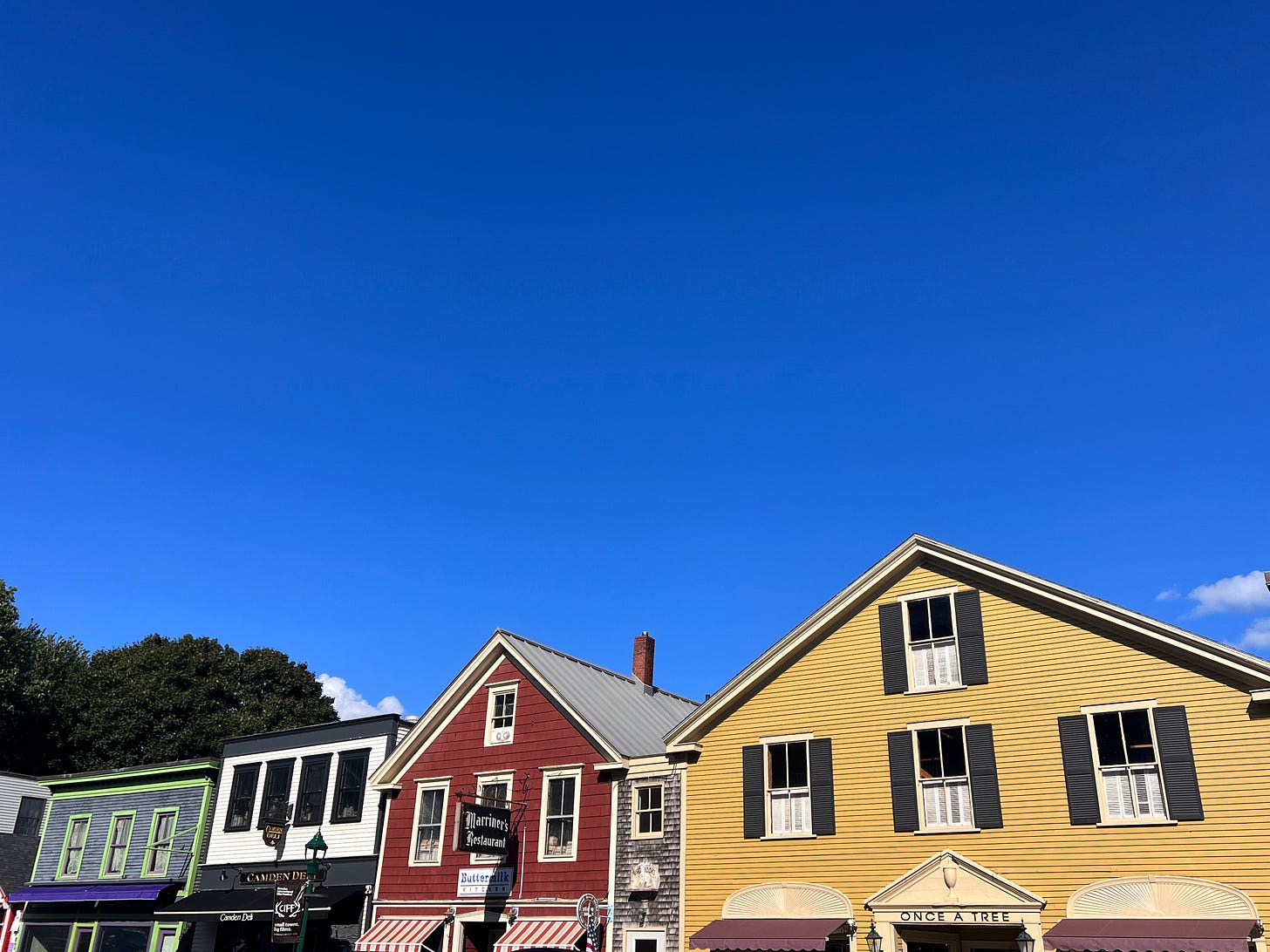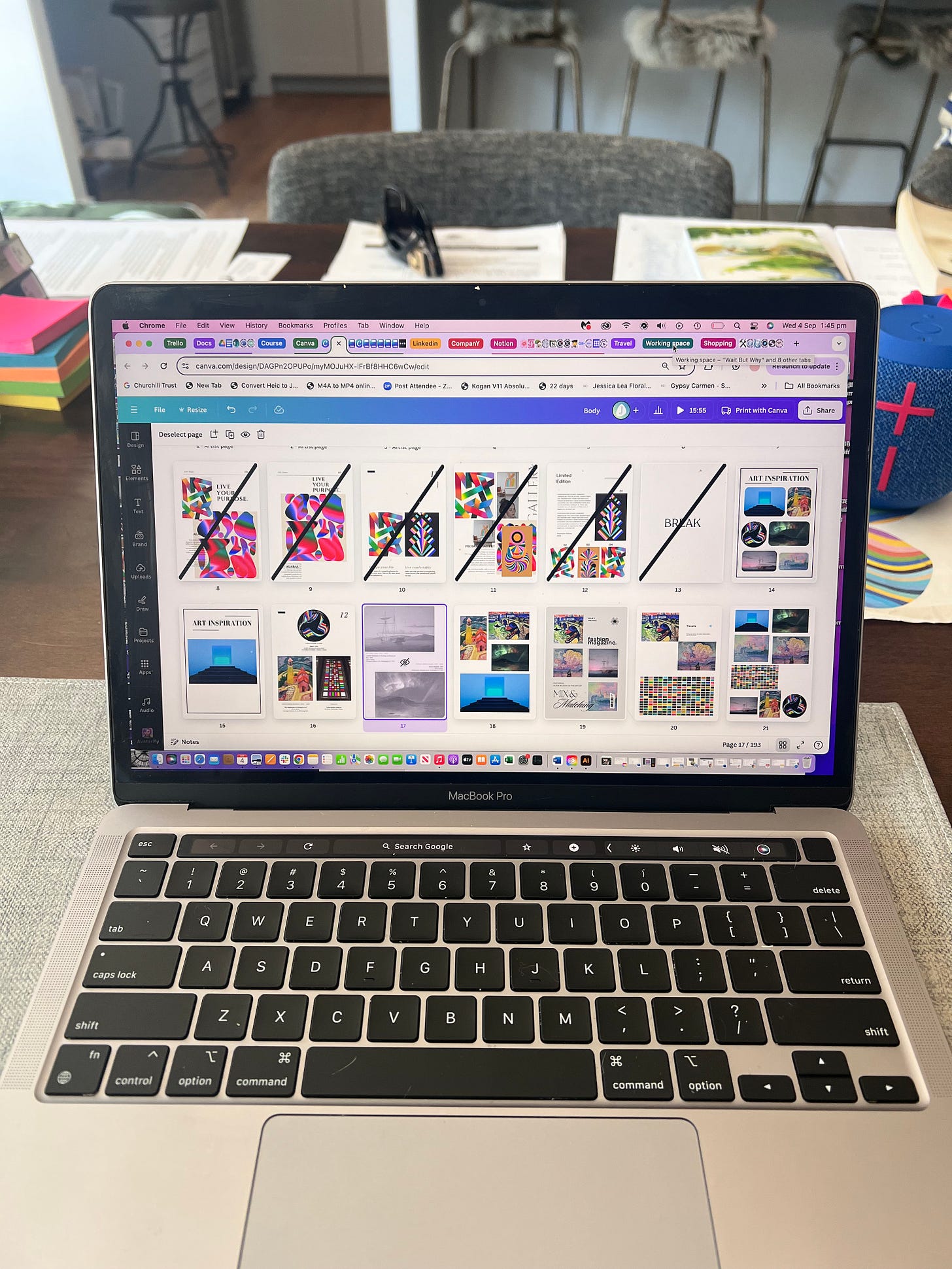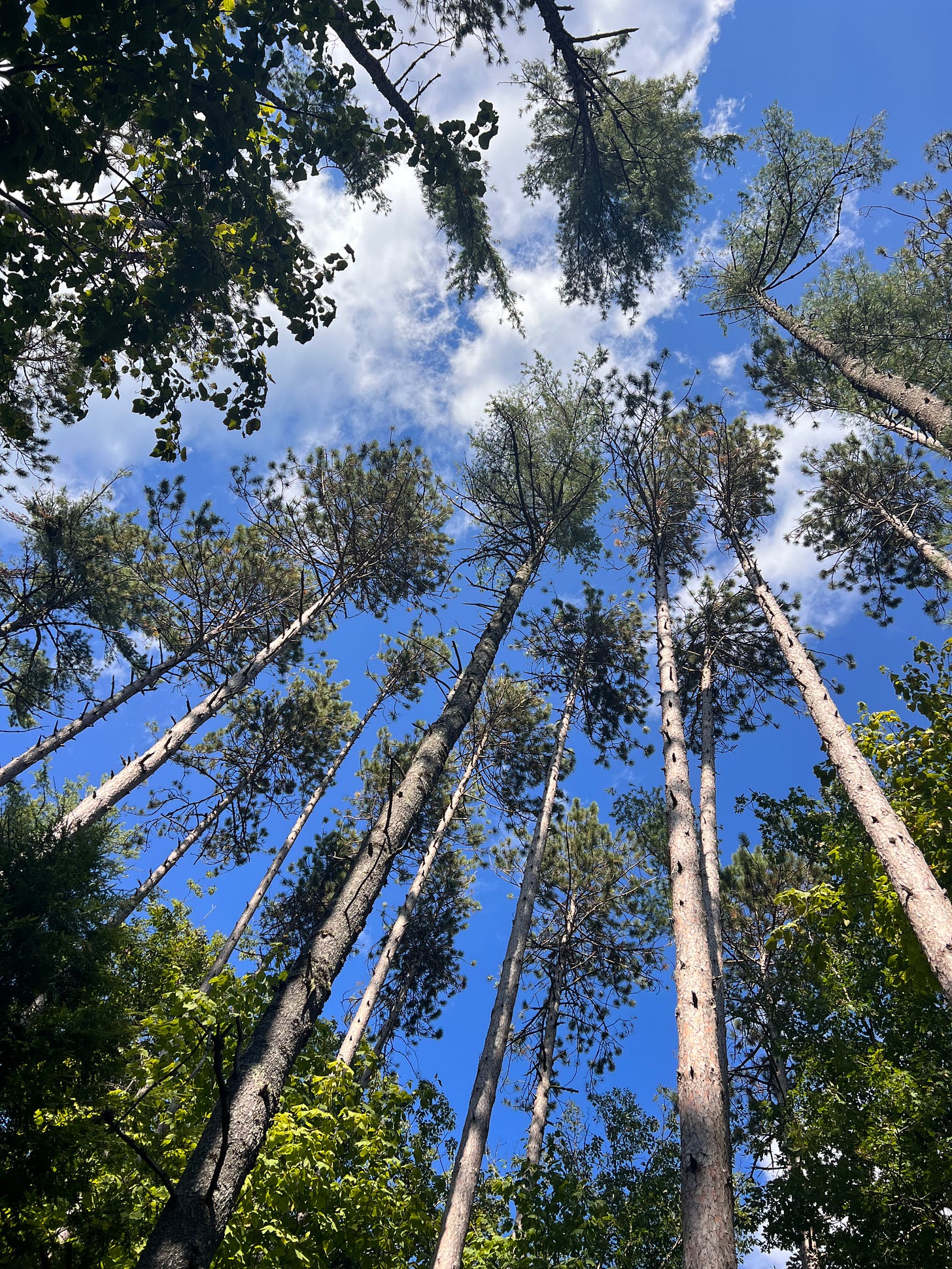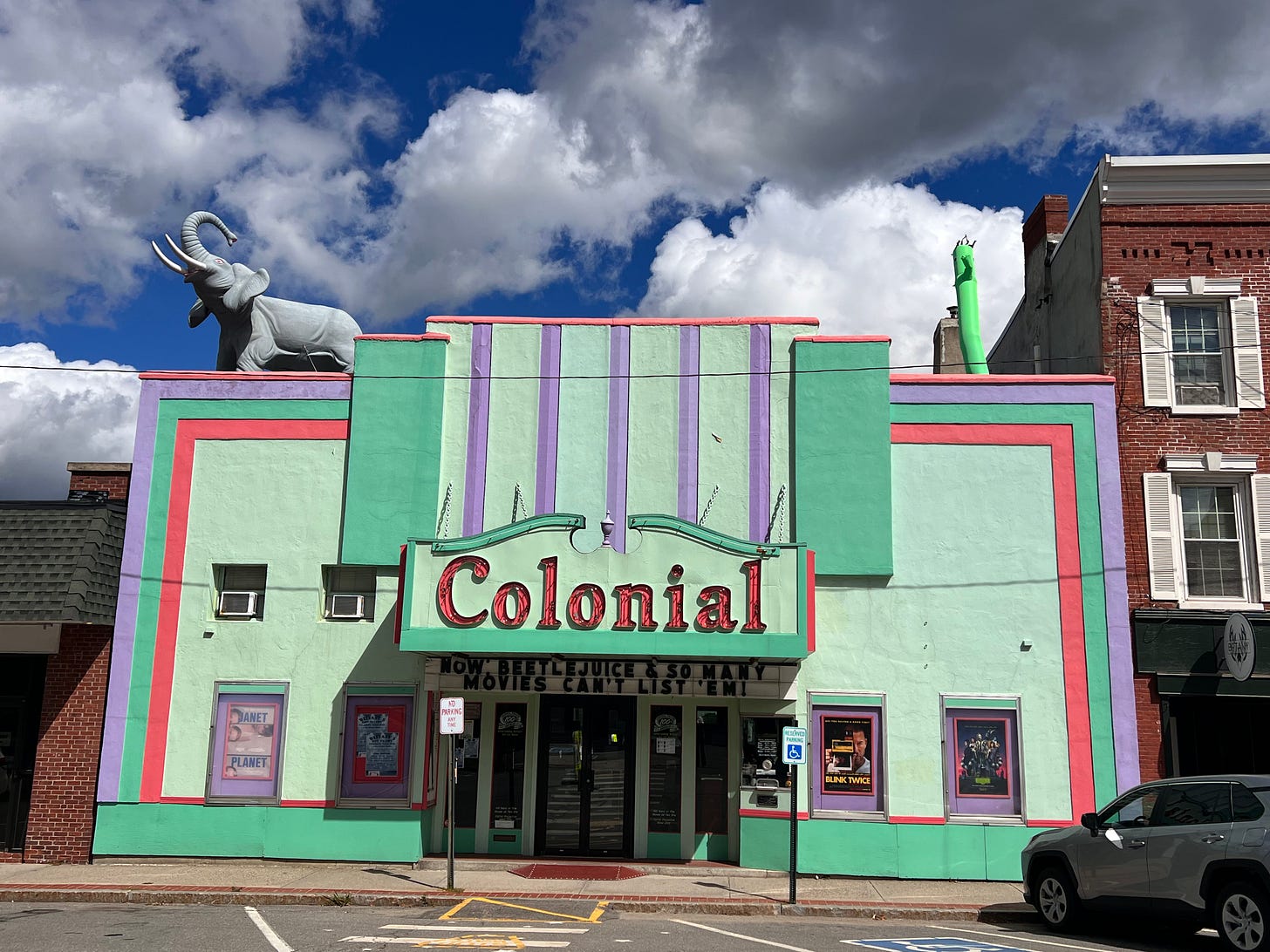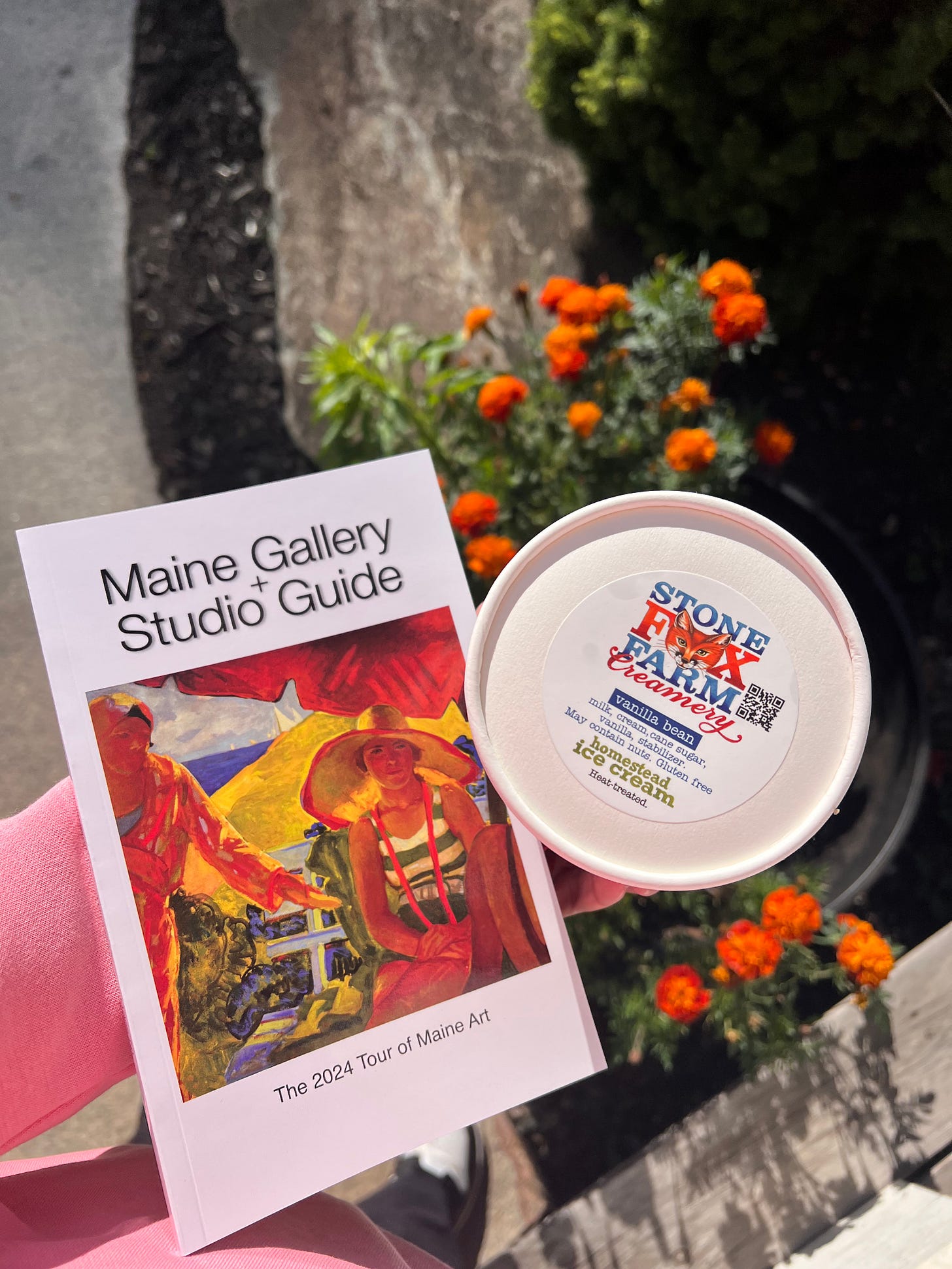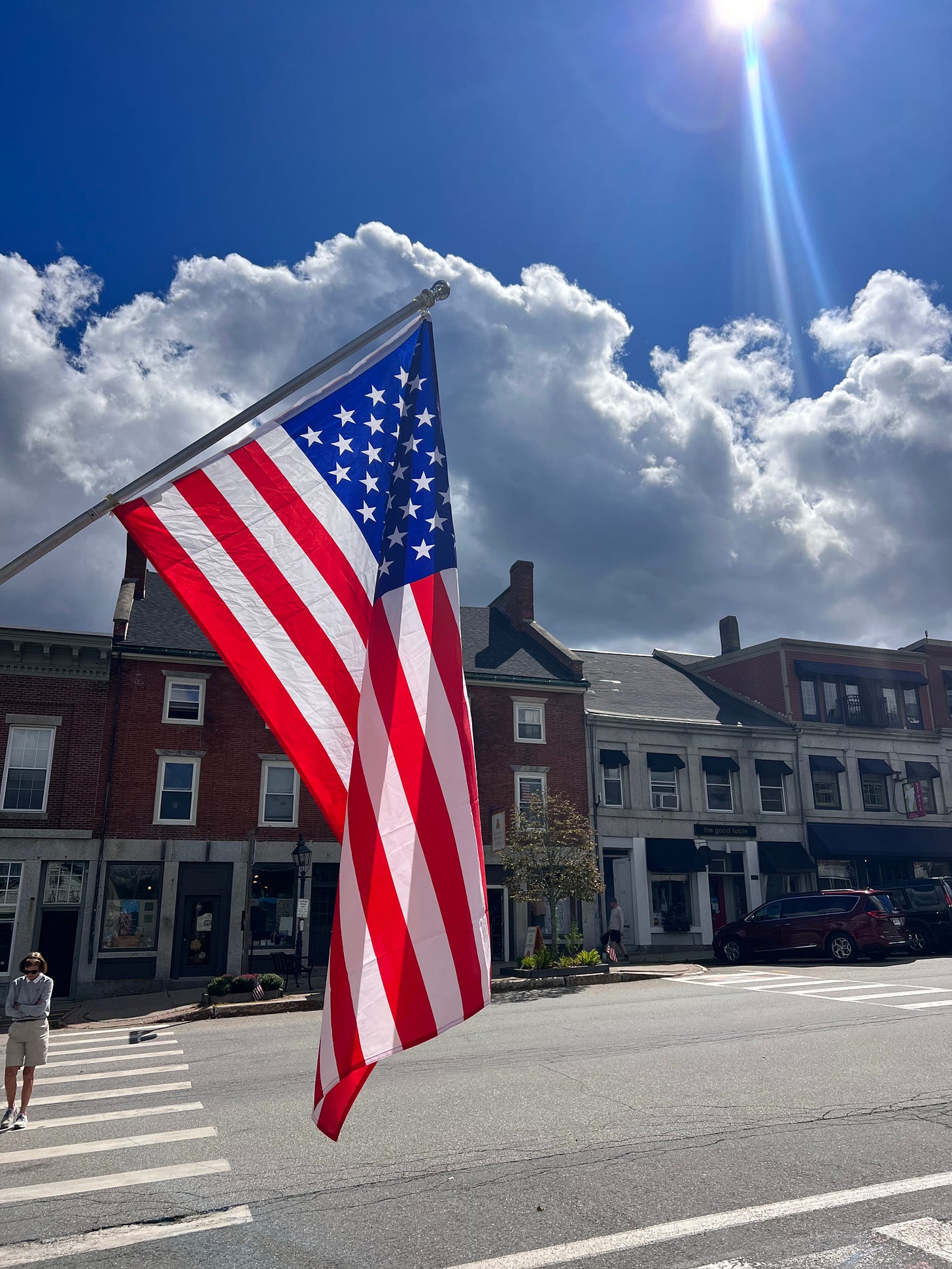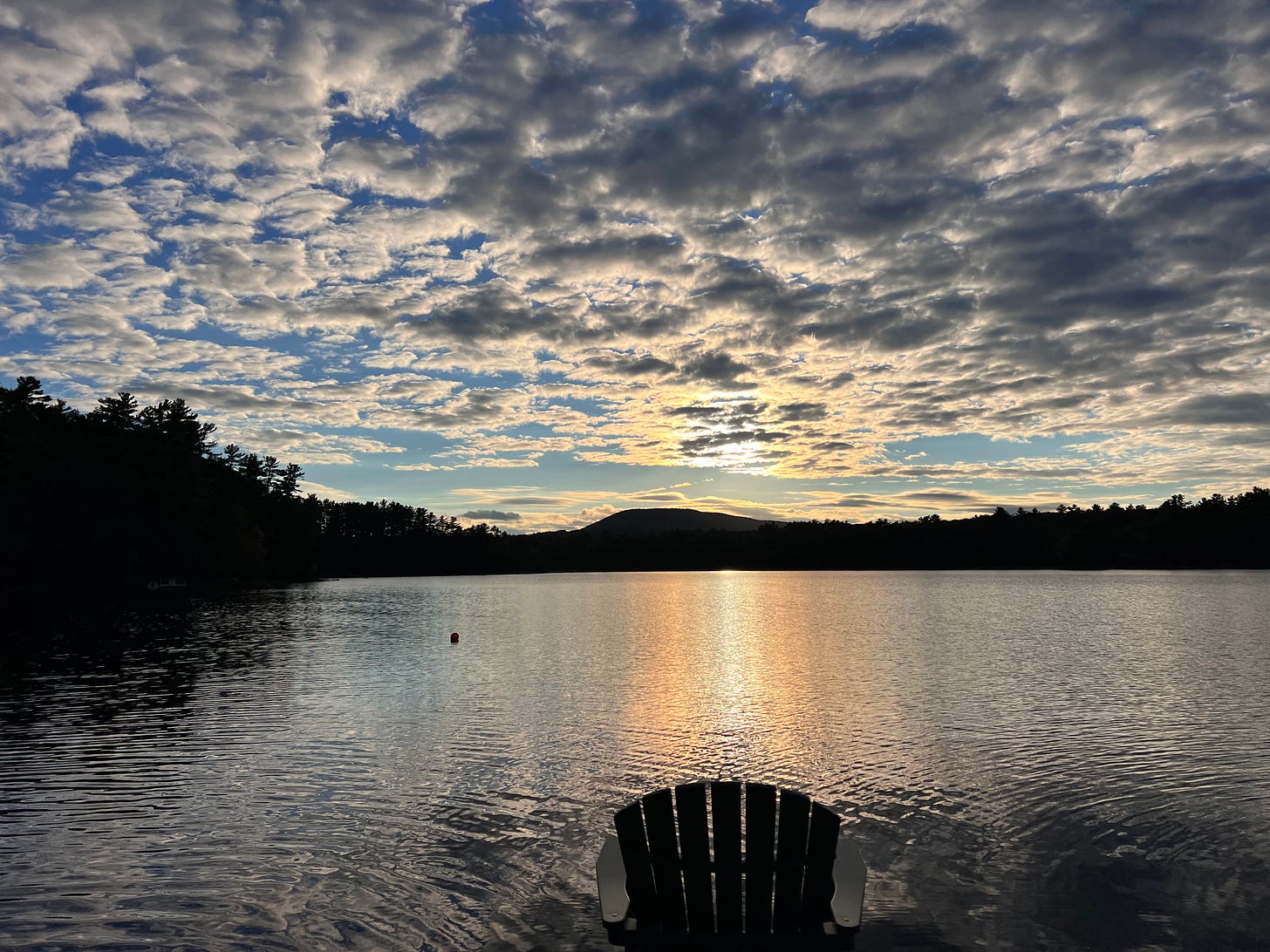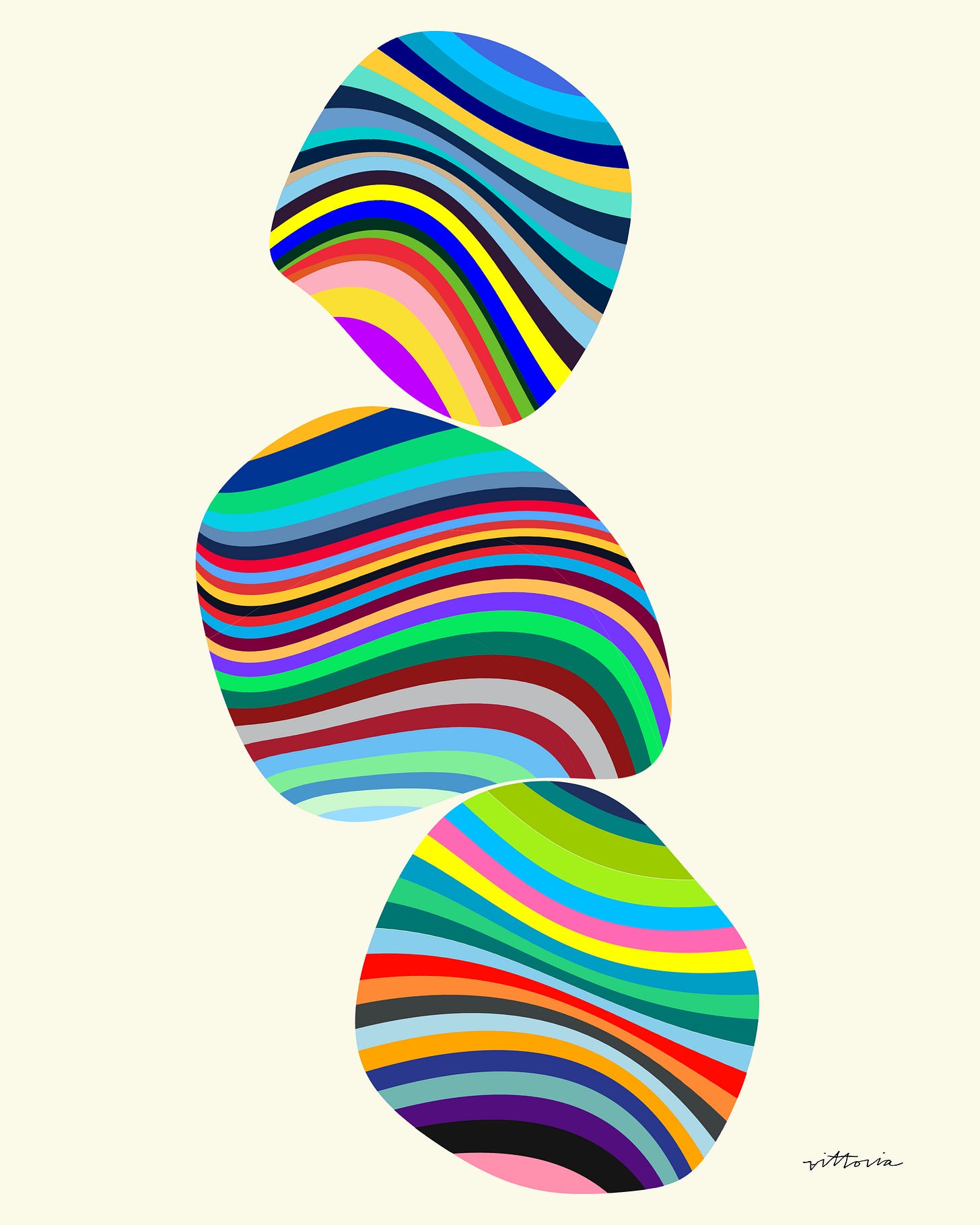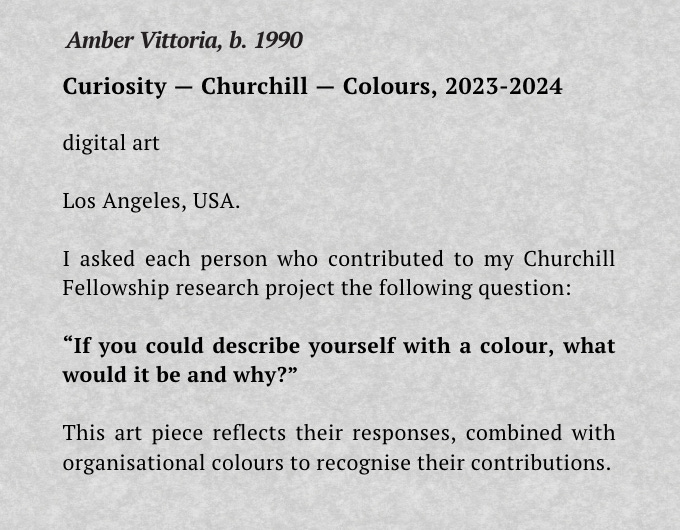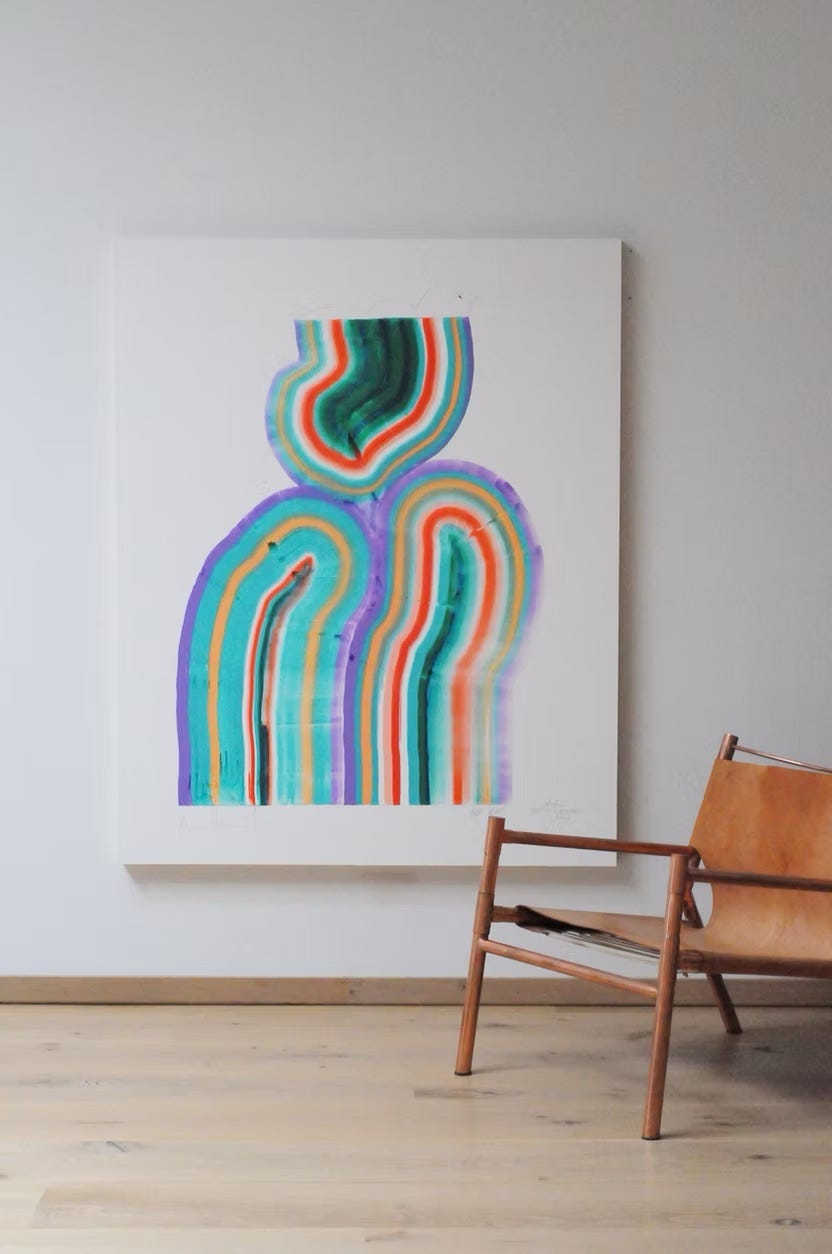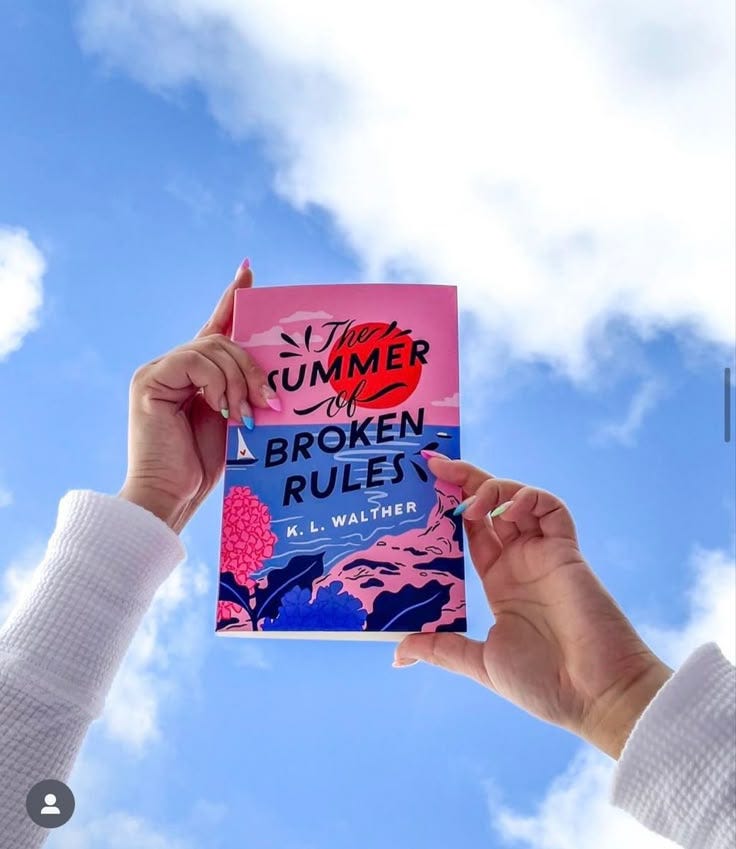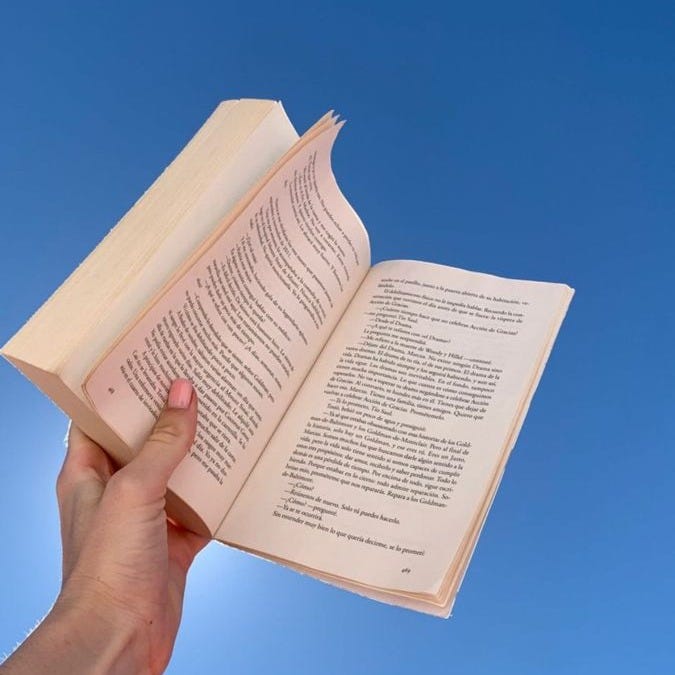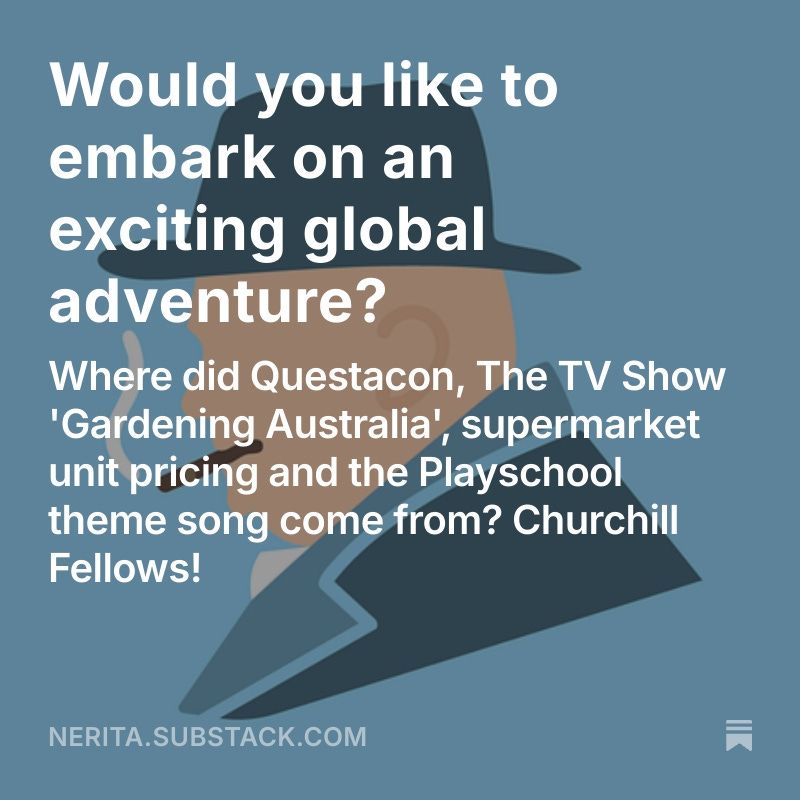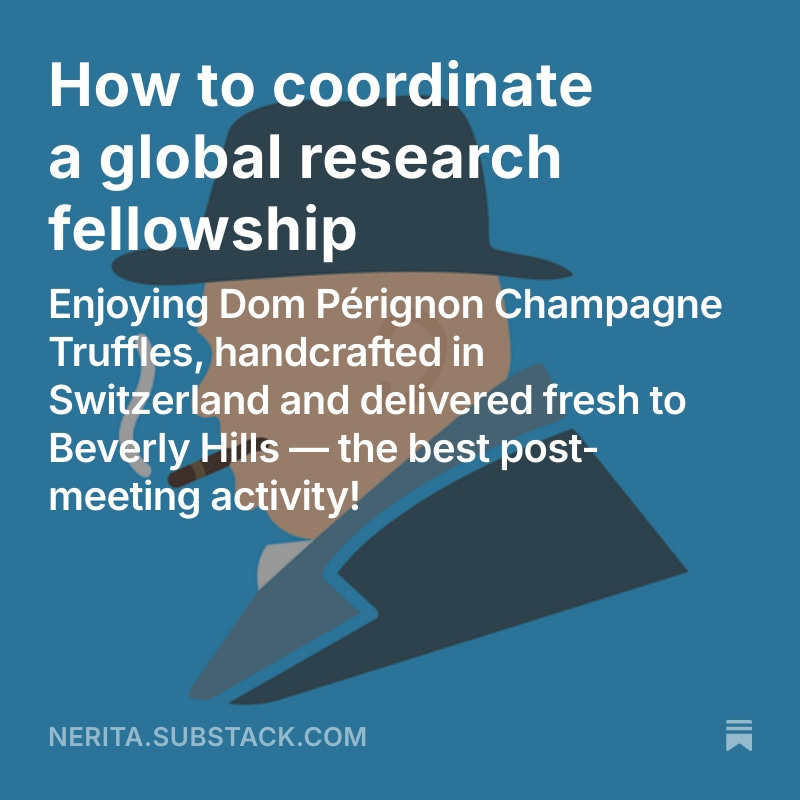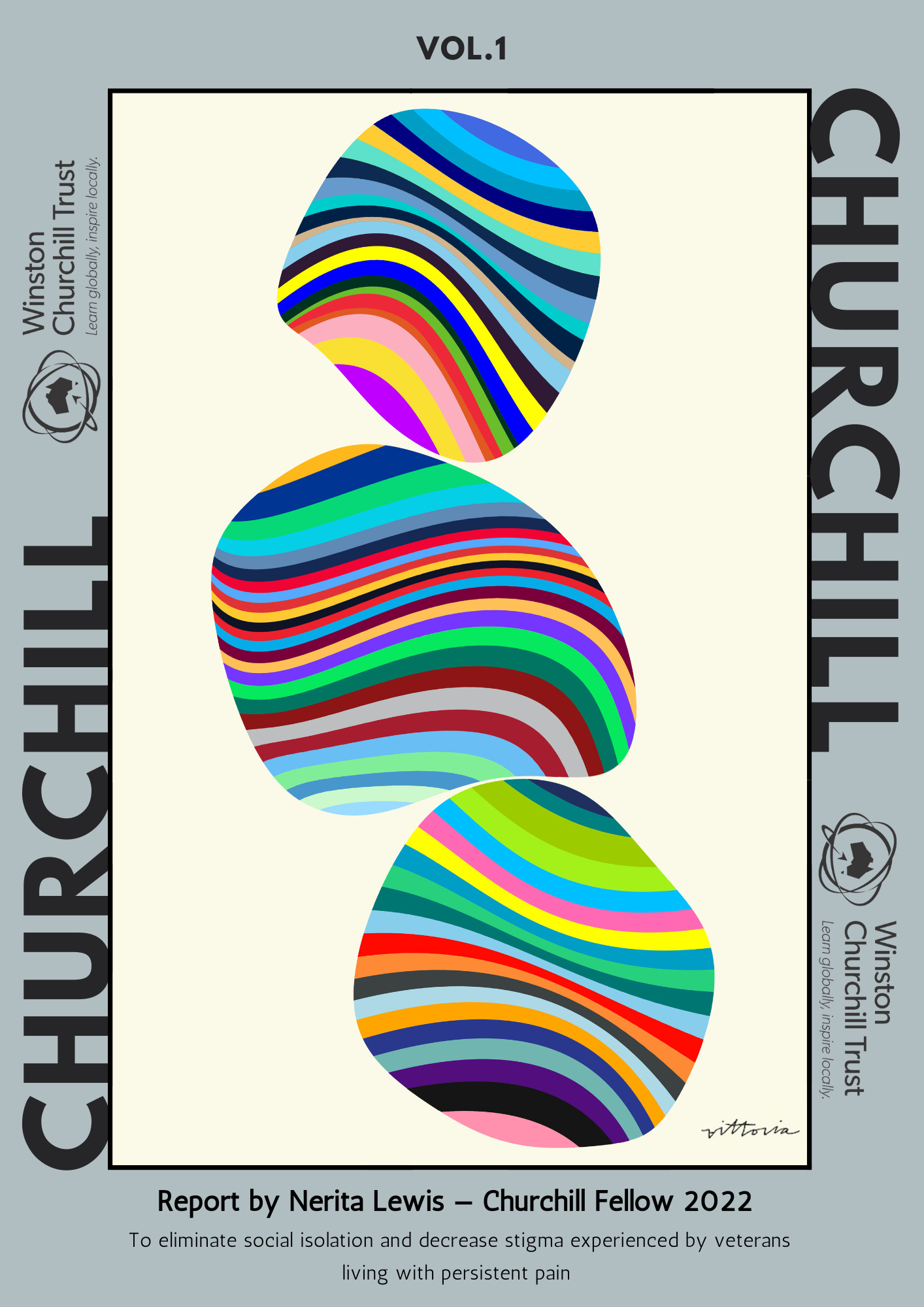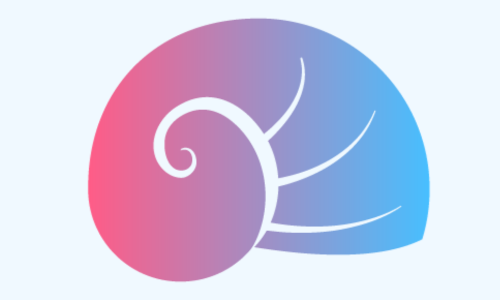I wasn’t even going to write a report...
I won’t write a report ➝ I’ll write a short report ➝ I wrote a 126-page report!
TL;DR
I captured my Churchill Fellowship experience through an art-style magazine, a commissioned artwork, and a short animated video. Writing a large body of work can be overwhelming; there are ways to ensure it is an enjoyable experience. Is there a creative way you could share your research? Applying creativity, capturing insights early, setting up a dedicated workspace, engaging an editor, and using recommended platforms can make the entire reporting process significantly smoother.
🕰️ Read time: approx 10 minutes
Hot tips for players
Write the report in the style that suits you, not what you think you should do. Be as creative as you choose
People lead busy lives, creating curiosity is the goal to ensure wide dissemination
Capture your research as early as possible. Set up a research framework, record meetings and transcribe at the time of meetings
Use Notion, Canva and Otter for your ‘Tech Stack’. See inside this article for the full list
Create a dedicated space to write your report — an area in your home or a co-working space. This limits distractions and increases productivity
An editor is a ‘must-have’ and worth the investment. A designer is also worth considering
Report style
Before embarking on my Churchill Fellowship journey, I shared with many people that I would be writing a lengthy report — around 30,000 words. Their responses were always similar: “I’ll never read that”, “Just send me the executive summary” and “I wish I had time to read your report”. The report that hadn’t even been written yet!
You can choose to write a traditional report, which is what I thought was expected. However, during a Fellowship dinner, I was informed that I could be creative with my report. Other Churchill Fellows have shared their research through a documentary and a journal article as examples. This was the catalyst for consideration as to how I would like to present my research. I pondered the journal article concept as my love of university studies attracted me to this option (I’ve graduated with four degrees), but I decided against this.
Instead, I chose to explore an engaging, beautiful and unique way of presenting my Churchill Fellowship experience and discoveries. My ‘report’/art-style magazine uses colour, art, photos, personal stories, quotes and research — a combination of what I am passionate about, reflecting who I am.
Here’s a sneak peek:
Writing the report
Capture everything at the time. Can you remember the finer details of a meeting you had last week? When meeting with lots of people over a long period while travelling in foreign countries, it’s easy to forget important details. I didn’t write the report until months after the actual time that I was overseas. I took some time out, studied at Harvard University and had some health challenges, so it was unexpectedly delayed. I appreciate the flexibility the Churchill Trust offered with finalising the report. I am glad that I captured all of the information at the time enabling review later on
Have a clear deadline: Without a deadline and some pressure, the whole process can drag on, almost forever! The Fellowship sets a deadline and there was some flexibility with this, which I am grateful for
Create a framework at the beginning: A framework including specific sections is essential. The framework I established included specific report sections — introduction, body, conclusion, reference list, quotes, acronyms, etc. Have all of your sections as headings that are clearly marked. I moved the report sections around a lot as I wanted to ensure that everything flowed smoothly. I used post-it notes as shown in the below photo. As I worked on the document, I would refer to these sections and then move them around. This ensured that everything flowed smoothly and was inter-linked
Capture references as you go: It can be difficult to find a reference, photo, etc. especially at a later date. Every time I added something into the document that needed referencing, I made a note next to it with the quote reference or date of the photo (to find it later on). I started a reference and source list as part of the draft outline at the beginning
Record meetings (with permission): One of my meetings lasted six hours. I took brief notes with pen and paper with key insights, but the transcription provided the ‘gold’! Over 40 pages of transcription resulted from this one meeting. Listening, asking questions and engaging with someone requires a lot of concentration. If you are also trying to capture all of the key pieces of information, you are multitasking, which is difficult to do. My primary focus was engaging with the person, really listening to what they were saying, exploring comments they made and referring to my pre-prepared questions list. I uploaded the recordings to Otter for transcribing and stored the information in Notion
I love Notion and created a ‘research directory’ to store all of the research:
🔗 You can access the Template here:
https://tinyurl.com/Research-Directory-Template
Secure a designer, artist, editor, etc. early: I engaged with these people before starting the research and travel. This ensured they were confirmed, and that expectations and timeframes were established
Determine you budget: The Fellowship allowance is $2000, which covered some of my costs. My biggest expense was the artist and this was my personal choice, not a requirement. The budget was sufficient for assistance with design and editing
Dissemination: The Fellowship allowance is $1000 to promote and disseminate your report. I used these funds to work with a team to create the animated video. I considered using the funds to print the report and share with others, but the cheapest price was $50AUD per report. Postage internationally was also very expensive, so this wasn’t a financially viable option
Google Drive link: Google Drive is the best way to share the report, using the ‘share’ option and ‘anyone with the link’. I created a folder so I could add other materials. As my report uses so many photos and images, I shared both a ‘view’ and a ‘print’ version. Printing colourful documents is saved as a specific file type. This folder contained the two promotional videos
Tech Stack: Otter — transcribing; Notion for overall capturing of everything in the one place; G drive — sharing the report; Slack — communicating with the editor and designer; Calendly — booking meetings and allows people to choose a time and date that suits them in a set window; Voice Memos — recording meetings; Canva — report templates and designs
Photos: Each week, I went through my photos and created an album with the location. This made it a lot easier to find photos later. Photos add a personal touch to the report
Research: Ensure you dedicate enough time to go through the information captured. For example, one 1.5-hour meeting resulted in 15 pages of transcribed notes — an example of the incredible amount of information captured. Further work and time are required for follow-ups. Finding the time to do this is necessary as it is very time consuming
Key points: Even with a creative report, not everyone will read it in full. Ensure you write an executive summary and conclusion, with clear recommendations and findings sections
Glossary: When immersed in a topic, it can be a habit to use complex terminology and jargon. Simplify as much as possible, and always have a glossary for people to refer to
Confidentiality: The purpose of my research was to learn from a diverse range of people and organisations about chronic pain to help build the foundations of my business: Jaspen Health. I found a balance between sharing valuable insights and protecting some information that was classed as ‘commercial-in-confidence’ for business purposes. Consider this aspect if you are conducting research for a business which is permitted for the Fellowship
Writing environment: It really depends on your circumstances. If you return home after the Fellowship, you will likely write the report from there. I suggest creating a dedicated space to write or using a co-working space. I find that blocking a time and dates in a calendar works well and ensures maximum productivity. I work as a digital nomad so I chose to spend six weeks by the lake in Maine, USA, writing my report. This was the ideal place to reflect on the Fellowship experience and be creative
Maine is one of the best places in the world for fresh, organic food, which fuelled me! Beautiful seaside villages, cute cafes with home-baked goods, incredible art, some of the friendliest people you’ll ever meet and complete immersion in nature. This was the ideal place to write the report, the perfect location.
Support
I engaged an artist, editor and a designer.
🖊️ Editor
An editor is essential for report writing. It’s easy to stare at your document and not notice errors! Additionally, my editor, Jess, helped with editing both video scripts.
Jess's email: jesslaven18@gmail.com
✏️ Designer
Given my preference for an artistic style, a designer to direct and create the overall style was essential. My love for art and desire to create something unique and beautiful made a designer necessary. Johnson designed the cover, which was treated like a book cover — a fundamental component to showcase the art piece. Johnson's skills extended past ‘designer’ — he was also the creative director of the animated video.
Johnson's email: johnson.velgo@gmail.com
🎨 Artist
I’d admired Amber’s use of beautiful colours in her art pieces for a couple of years, so she was the ideal artist for this project. I engaged with before leaving Australia to start the Fellowship. I was so excited to receive an email confirming she would be creating the art piece! Here it is:
You can read more about the art in my Fellowship report, pages 1-13
One of my favourite pieces of hers:
You can read more about Amber in my Fellowship report on pages 14-17.
🎞️ Motion designer
I saw a Tweet on X with a video of Nusair’s work, and I messaged him that day — I was so impressed by his work. I loved that this wasn’t just a job to him — he understood and believed in the vision and added incredible advice and elements to the video. He even helped write part of the script!
Nusair's email: nusair4080@gmail.com
Sharing the report
I have learnt that as soon as you start something, more work is required that anticipated. For example, the art piece on the report cover. I shared the art piece in the report and realised I needed to create an ‘art label’ to accompany the piece. This is an example of going down ‘rabbit holes’ learning all about something new. I created an official art label that matched the labels displayed in physical art galleries.
Once the report was finalised, I was preparing to email it to over 200 people. I then realised that emailing a 126-page document was risky. People are bombarded with an average of 121 emails per day (Venngage, 2025), so they may ignore an email with a large report attached.
At first, the concept for a creative way to share the report was simple: a photo with the sky as a background, holding a book with the report as the cover to capture people’s attention.
This was the inspiration:
Two hours, many photos, a very patient partner and some editing later, it was obvious that this was not a good idea. The images didn’t look right, even with editing. Despite battling the Costa Rican heat, burning sun and biting insects, it was worth a try!
Instead, a one-minute animated video to create suspense and curiosity, ‘unveiling’ the art piece and research was conceptualised.
It’s not until you start a project that you realise it may not work and new ideas form. It’s easy to look at Pinterest and find photos like the ones above and decide to re-create them. I’ve learnt that creativity is a process, and once you start, things evolve and often take an entirely new direction than the original concept.
I have a new appreciation for film after creating this one-minute video! A lot of thought and effort went into something so short, with four people (including myself) working as a team to create the final video. I’m proud of what we created, and it was a lot of fun. I’ll share more about this process soon.
🎥 Here is the video:
Additionally, the Churchill Trust asked that I record a video of me speaking about the report and research. As someone who hates being photographed, being recorded on video is my worst nightmare. However, I almost always say yes to opportunities, especially when they are ‘shining a light’ on an important topic such as veterans and chronic pain. It becomes something bigger — it’s not about me, but about others. Helping them requires stepping outside my comfort zone and onto the camera! I’ll share more about this process soon.
🎥 Here is the video:
You may find my other Churchill Fellowship articles helpful:
Application tips for the fellowship
🔗 Would you like to embark on an exciting global adventure?
Coordination tips for the fellowship
🔗 How to coordinate a global research fellowship
Whilst I initially considered not writing the report, it isn’t technically required. Then I thought I could write a very short report to capture the experience, which I now realise is laughable! It evolved into something a lot bigger. At first, I felt overwhelmed — but once I realised the style was flexible, the pressure lifted, and I leaned into the creative process.
Report writing can actually be fun! Collaborating with talented people who truly care about the research and the vision made the experience deeply rewarding. Publishing this body of work is something I’m genuinely proud of. I hope these tips help to ease feelings of being overwhelmed and ensure the process is enjoyable.
Report
🔗📘 The Churchill Fellowship report
📃 If you’re curious about the next steps, you can learn more about Jaspen Health by reading the 🔗 ➡️ Research Implementation Plan here.
Thanks for joining The Danger Zone—where life begins at the edge of comfort.
Nerita 🐚



